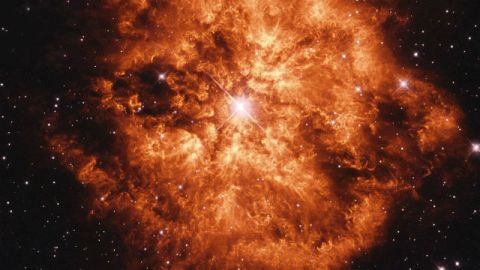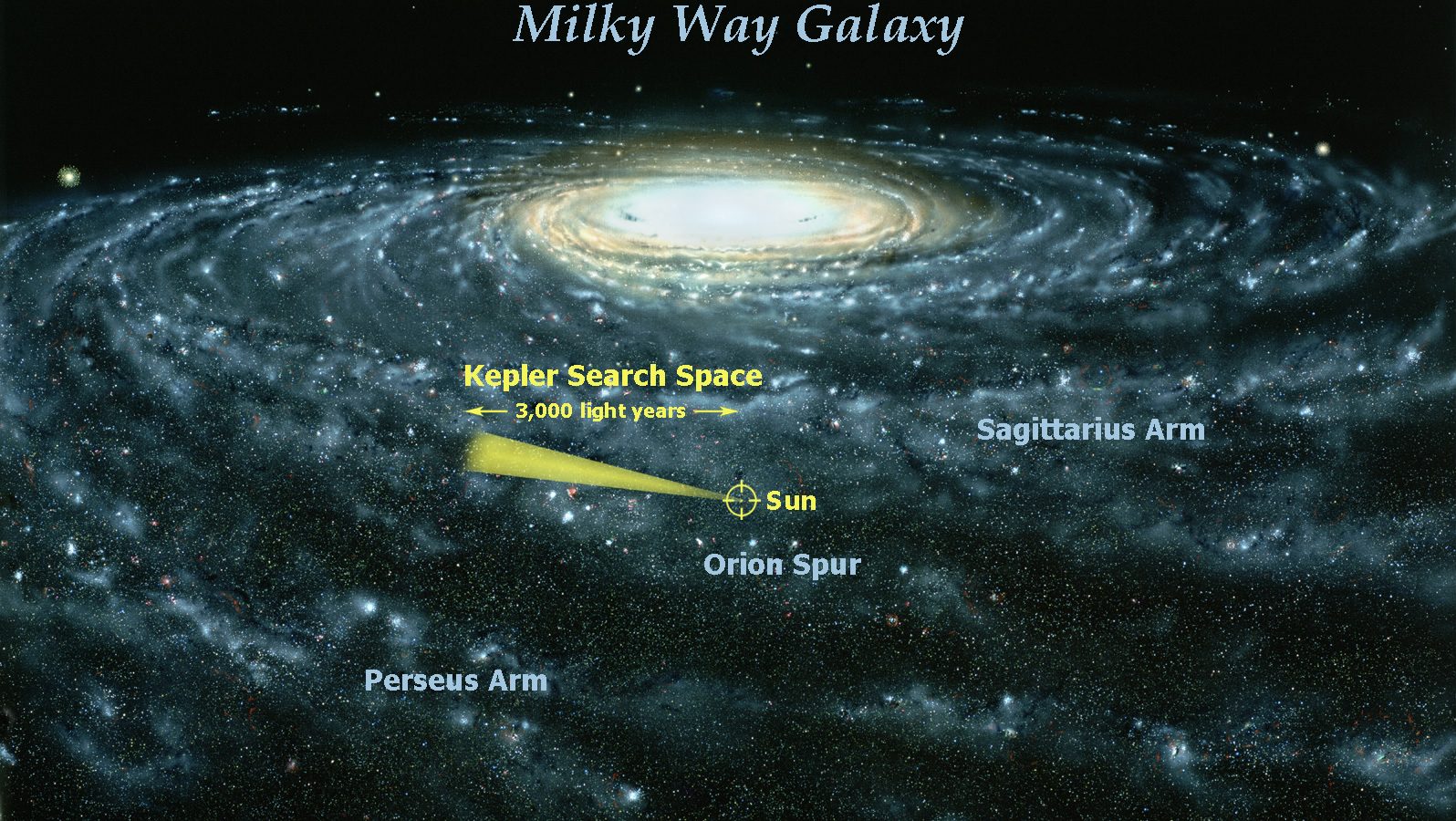Wolf-Rayet Star 124

Think a star explosion is always a pyrotechnic show far superior than all the 4th of July fireworks put together? Some stars actually explode in slow motion. NASA captured one such bizarre display as a massive, hot, and tumultuous Wolf-Rayet star slowly disintegrates.
NASA has more:
Glowing gas globs each typically over 30 times more massive than the Earth are being expelled by violent stellar winds. Wolf-Rayet star WR 124, visible near the above image center spanning six light years across, is thus creating the surrounding nebula known as M1-67. Details of why this star has been slowly blowing itself apart over the past 20,000 years remains a topic of research. WR 124 lies 15,000 light-years away towards the constellation of Sagitta. The fate of any given Wolf-Rayet star likely depends on how massive it is, but many are thought to end their lives with spectacular explosions such as supernovas or gamma-ray bursts.
Image credit: NASA





